African American News & Issues
The Kinsey African American Art & History Collection – One Of The Most Comprehensive Collections Of African-american Art And History Outside The Smithsonian – Coming This Fall To The African American Museum, Dallas
By Afram News
DALLAS (June 19, 2019) – The African American Museum, Dallas in Fair Park will present the widely acclaimed exhibition, The Kinsey African American Art & History Collection, celebrating the achievements and contributions of black Americans from 1595 to present times. Considered one of the most comprehensive surveys of African-American history and culture outside the Smithsonian Institution, the exhibition will feature over 150 of the shared treasures amassed by Shirley and Bernard Kinsey during their five decades of marriage. The collection includes masterful paintings and sculpture, photos, rare books, letters, manuscripts and more. Presented by Toyota Motor North America, the exhibition will run Sept. 21, 2019-March 1, 2020. The Museum is located at 3536 Grand Ave. in Dallas’ historic Fair Park. NOTE: A media preview will be held Friday, Sept. 20, at 10 a.m.
Garnering national media attention and experienced by more than 15 million people, the groundbreaking exhibition has toured 30 cities in the U.S. and internationally, including the Smithsonian Institution’s National Museum of American History, National Underground Freedom Center, Walt Disney World’s Epcot, California African American Museum, and the University of Hong Kong Museum, to name a few. The exhibition has been cited in 3 national awards, including the National Medal for Museum and Library Service.
Representing the intersection between art and history, the exhibition covers the lives and artistry of African-American people from the 16th century through the years of slavery and emancipation, to the civil-rights movement and modern day. Highlights include bills of sale, advertisements, letters and legal papers documenting the slave trade; hand-colored tintypes from the Civil War era; art and literature from the Harlem Renaissance; and items spotlighting key moments in the civil rights movement, including the Woolworth store boycotts and the 1963 March on Washington.
Shirley and Bernard Kinsey, Floridians by birth and graduates of Florida A&M University, began collecting as a way to remember their travels, but their collection soon became a repository for African-American intellectual, historical and artistic works. The Kinseys believe their collection helps give a well-rounded look at the African-American experience and the integral roles African Americans played in building this country, providing new perspectives on the nation’s history. The collection has turned into a family affair, with the Kinsey’s son, Khalil, serving as general manager and chief curator.
“The Kinsey Collection strives to give our ancestors a voice, name and personality, enabling the viewer to understand the challenges, obstacles, triumphs, accomplishments and extraordinary sacrifice of African Americans in building this country,” said Bernard Kinsey.
A history of the African American in art is charted through works by numerous celebrated artists, including Alma Thomas, Romare Bearden, Elizabeth Catlett, Aaron Douglas, Sam Gilliam, Charles White, Palmer Hayden, Augusta Savage, Lois Mailou Jones, Artis Lane, James Porter, Robert S. Duncanson, and many more.
Other items include the earliest-known black baptism record and black marriage record; a 1773 first-edition copy of poems by Phillis Wheatley; an 1853 copy of author Solomon Northrup’s 12 Years A Slave (which was made into a movie and won the Academy Award-winning for Best Picture); and a copy of the 1857 Dred Scott Decision. Other noteworthy items include an early version of the Emancipation Proclamation; an illustration of the “first colored senator and representatives” in the 41st and 42nd U.S. Congress; a 1901 copy of Booker T. Washington’s Up From Slavery; a letter from Malcolm X to Alex Haley, author of Roots: The Saga of an American Family; and a signed copy of the Brown vs. Board of Education ruling, a landmark legal decision made in 1954 by the Supreme Court ending the legal barriers to Jim Crow and segregation.
While this is the first time in two years that the comprehensive collection will be seen in America, North Texans did get a preview of the collection in 2018 when selections were on view at Toyota Motor North America’s headquarters in Plano. Also, works of art showcasing the Harlem Renaissance were featured at the Plano Art Centre.
“Toyota Motor North America is pleased to support the African American Museum, Dallas in presenting The Kinsey Collection, a monumental exhibition that educates, inspires and helps us to appreciate the enormous and vital contributions made by African American people over the past four centuries,” said Al Smith, group vice president and chief social innovation officer, Toyota Motor North America. “Toyota hosted a Juneteenth exhibition at our headquarters last year, and, based on that sneak peek, we greatly encourage families, students and educators, State Fair of Texas visitors, and civic leaders to take advantage of this must-see experience.”
The arrival of The Kinsey Collection comes as the African American Museum, Dallas celebrates its 45th year and on the heels of the successful Slavery at Jefferson’s Monticello – Paradox of Liberty traveling exhibition, which attracted the largest crowds since the museum’s 1974 opening.
As part of the exhibition, the Museum will host a multi-topic lecture series and book signings. Tours and a comprehensive educational curriculum will be offered for schoolchildren participating in field trips.
Additionally, a richly illustrated book with a foreword by Douglas A. Blackmon, the Pulitzer Prize-winning author of Slavery by Another Name: The Re-Enslavement of Black Americans from the Civil War to World War II, accompanies the exhibition and will be available for sale in the Museum shop along with other gift items from the Collection.
TICKETS, KEY INFORMATION AND WEBSITE
TICKETS. Tickets are $10 for adults, $5 for seniors (65 and older) and children ages 4-12, and free for children 3 and under. Also, admission is free on Thursdays for seniors 65 and older. African American Museum members also receive free admission. Tickets to go on sale July 15.
For details and to purchase individual, group and school field-trip tickets, please go to aamdallas.org (Tickets also may be purchased at the Museum.)
HOURS. Except during the State Fair of Texas (Sept. 28-Oct. 20), the African American Museum will be open Tuesdays through Fridays from 11 a.m.-5 p.m. and Saturdays from 10 a.m.-5 p.m. During the State Fair of Texas (Sept. 27-Oct. 20), the Museum is open daily (including Sundays) from 10 a.m.-7 p.m., except for Sept. 28, Oct. 5 and Oct. 12, when the Museum is open from 3-7 p.m. The Museum is closed Thanksgiving Day, Christmas Day and New Year’s Day.
TOURS BY REQUEST. Groups of 10 or more may request docent-led tours of the permanent collection or special exhibitions. Availability varies and arrangements must be made at least two weeks in advance. To schedule, contact jcowley@aamdallas.org or call 214-565-9026, ext. 307.
INFORMATION. For tickets and more information, go to aamdallas.org. For details about The Kinsey Collection, go to TheKinseyCollection.com.
NOTE: FOR PHOTOS AND LOGOS, GO HERE.
About the African American Museum, Dallas
The African America Museum, Dallas was founded in 1974 as a part of Bishop College. The Museum has operated independently since 1979. For more than 40 years, the African American Museum has stood as a cultural beacon in Dallas and the Southwestern United States. Located in Dallas’ historic Fair Park, the African American Museum is the only museum in the Southwestern United States devoted to the collection, preservation and display of African American artistic, cultural and historical materials that relate to the African-American experience. The African American Museum incorporates a wide variety of visual art forms and historical documents that portray the African American experience in the United States, Southwest, and Dallas. The Museum has a small, but rich collection of African art, African-American fine art and one of the largest African American folk-art collections in the United States. Learn more at aamdallas.org
Source: African American Museum
Photo credit: neighborhoods.com
African American News & Issues
Town Hall Meeting Seeks to Stop FCMAT, Karen Monroe, School Board from Closing Schools
“The actions of the Alameda County Office of Education (ACOE), demanding the closing (of as many as) 20 community schools and a $90 million cut in the budget of OUSD, is nothing more than an act of extortion, plain and simple,” said Clarence Thomas, who described himself as a retired third-generation ILWU Local 10 member and a labor and community activist. “More importantly, it is an attack on the democracy of OUSD’s School Board and the community that supports its decision to not close…schools.
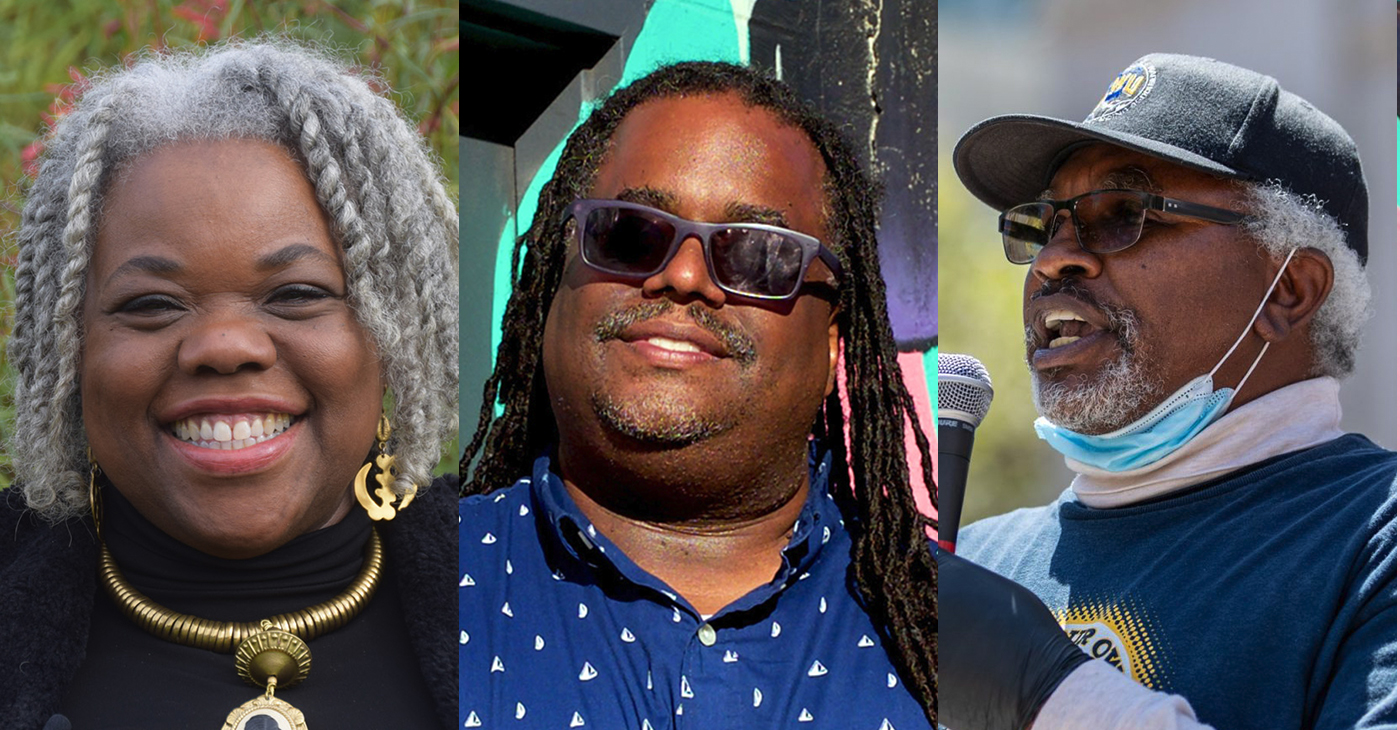
Retired ILWU leader Clarence Thomas says privatization attacks are occurring under Democrats
By Ken Epstein
More than 100 people —teachers, parents, school activists and community leaders — came together Sunday, Jan. 23, at a Zoom town hall meeting to begin mobilizing the city to oppose the permanent closing of neighborhood schools and threatened takeover of the Oakland school district.
The town hall was sponsored by the Oakland Education Association (OEA) and the Oakland Post Salon.
After listening to speakers, the meeting divided into Zoom breakout rooms to organize to spread the news of what is happening throughout Oakland and to mobilize the communities to halt the takeover and protect the schools that are in danger of being closed this year and in the next few years.
The closing of these schools is being implemented by the Oakland school board majority under pressure from L. Karen Monroe of the Alameda County Office of Education and the Fiscal Crisis Management and Assistance Team (FCMAT) on behalf of the state.
Speakers at the town hall included OEA President Keith Brown; Kampala Taiz-Rancifer; Dr. Kimberly Mayfield, vice president of External Affairs for Holy Names University; School Board Member Mike Hutchinson; Post Publisher Paul Cobb; and retired ILWU leader Clarence Thomas, who has written a new book (available at www.MillionWorkerMarch.com).
Another speaker was Alysse Castro, candidate for Superintendent of Alameda County Schools and currently executive director of San Francisco County Schools and a former teacher and principal.
Castro has just received the sole endorsement of the California Teachers Association, officially shifting support from the incumbent L. Karen Monroe, whom they endorsed previously.
In his remarks, Brown spoke against the threats of school closings and state takeover issued by Monroe, who threatened that FCMAT would be placed in charge of the school district if the school board did not immediately carry out cuts and closures.
Under pressure, board members had voted 5-2 to begin closing schools this year rather than taking on a fight to defend Oakland’s public schools.
“Oakland students deserve better,” Brown said after the meeting. “It is unacceptable that five school board directors will make the decision to permanently close neighborhood schools at this time.
“In November of 2020, Oakland voters rejected an agenda of closing schools,” he said. “Oakland families want robust neighborhood community schools that supports the health and safety of our students. This must be the work of our school board.”
Clarence Thomas, who described himself as a retired third-generation ILWU Local 10 member and a labor and community activist, defended public education and discussed the need to fight against the concerted attempt to privatize Oakland schools and city property and drive working people out of the city.
“The actions of the Alameda County Office of Education (ACOE), demanding the closing (of as many as) 20 community schools and a $90 million cut in the budget of OUSD, is nothing more than an act of extortion, plain and simple,” he said. “More importantly, it is an attack on the democracy of OUSD’s School Board and the community that supports its decision to not close…schools.
“These actions on the part of the ACOE only serve to undermine local school autonomy and the interests of those that will benefit from the dismantling of public education! OUSD has experienced the intervention and influence of privatization/corporatization of its schools through such billionaires as Eli Broad, and Bill and Melinda Gates.”
“This attack on our local school district is taking place while democratic Governor Gavin Newsom and State Superintendent of Instruction Tony Thurmond are in power!
“It is not a coincidence that the democratically elected officials such as former Assemblyman Rob Bonta (current attorney general, State of California) and State Senator Nancy Skinner, both facilitated the privatization of the Port of Oakland’s Howard Terminal for right-wing billionaire John Fisher, a major funder and supporter of charter schools,” Thomas said.
Activism
Oakland A’s Star Tony Kemp Tells Us Why He’s Planting Trees, Messaging with Fans
For the 2021 baseball season, Kemp teamed up with a national organization and pledged to plant 100 trees in urban communities for every stolen base and extra-base hit he recorded.

By Nick Marnell, Bay City News Foundation
Oakland A’s infielder Tony Kemp picked a great year to pledge a charitable contribution based upon his on-field performance.
For the 2021 baseball season, Kemp teamed up with a national organization and pledged to plant 100 trees in urban communities for every stolen base and extra-base hit he recorded.
Fortunately for the environment, Kemp, 30, produced the best season of his six-year major league career, compiling 27 extra-base hits and eight stolen bases to go along with a strong .382 on-base percentage. He was also one of only two hitters in the American League (with at least two plate appearances per every regular season game) to walk more often than he struck out.
“I’m glad I got the chance to play and show what I can do,” Kemp said.
The 3,500 trees Kemp donated were just the catalyst as PG&E, one of the team’s corporate sponsors, doubled down on the pledge “to further its support of environment and sustainability awareness,” company representative Lynsey Paulo said. “With PG&E’s donation, there will be 7,000 trees planted as part of this program.”
On Dec. 10, volunteers from the A’s, PG&E, the City of Oakland and various charitable organizations met at Sobrante Park in Oakland and planted 15 trees. Kemp said he will plant trees this spring in his hometown near Nashville.
One of Kemp’s partners in the tree planting venture is Players for the Planet, a national organization founded by former major leaguer Chris Dickerson. Players for the Planet asserts a goal of uniting professional athletes to create positive change for the environment. “Our programs are designed by the players so they can contribute wherever they see a need or opportunity,” Dickerson said.
“I always wanted to do a reforestation project,” Kemp said. Possibly as a giveback for the amount of lumber used in his profession? Kemp chuckled, but said his goal was much greater than replacing a handful of broken bats. “I’ve always cared about the planet. I’ve been an advocate for a recycling project for a long time. This one was a no-brainer.”
Dickerson agreed that Kemp is a committed activist. “Tony has been a tremendous advocate for giving back to the community,” he said.
Addressing systemic racism
Even though he is not a fan of confrontation, in summer 2020 Kemp became one of the most active ballplayers speaking out against racial injustice. Haunted by the murder of George Floyd on May 25, 2020, and the unfolding civil unrest, Kemp logged onto Twitter on June 5, 2020, and posted to his followers, then numbering more than 40,000: “Let’s be honest. It’s been a tough week. If any of you want to talk or want to be more informed don’t hesitate to ask me.”
That tweet prompted a series of one-on-one direct message conversations with friends, teammates and fans about systemic racism and his own life experiences as a Black man. Kemp then formalized these conversations into a campaign called the +1 Effect.
Explaining the name of his campaign, Kemp said he wanted his perspective to achieve a domino effect, of one positive conversation leading to another, and then another, through honest and respectful dialogue.
“I ask questions. Simple questions, and there is no yelling,” said Kemp, in keeping with his distaste of confrontation. “Those who yell the loudest, what are they trying to accomplish?”
Kemp shared portions of a +1 Effect conversation he had with a suburban white woman in Texas who wanted to do a better job of combating racism but feared that she had no platform.
“Of course, you have a platform and voice,” Kemp told her. “You can always be an influence and inspiration to those around you.” He went on to explain that undoing systemic racism “starts with calling out people for their offhand comments that they may not even realize are racially biased.
“Make it known that you will not tolerate racism or prejudice in any way,” he advised her, and recommended media for her to check out, including “The 13th,” Ava DuVernay’s documentary about racism in the criminal justice system; Nikole Hannah-Jones’ “1619” podcast on how slavery shapes American culture to this day; and Ibram X. Kendi’s history-driven guide “How to Be Anti-Racist.”
Supporting Black kids
Kemp also gives back through the Players Alliance, an organization of major league ballplayers who work to create an inclusive culture within baseball in order to promote racial equality and provide greater opportunities for the Black community. According to Society for American Baseball Research, since Jackie Robinson broke the color line starting with the Brooklyn Dodgers in 1947, the percentage of Black players in the MLB peaked at 18.7% in 1981 and declined to less than 10% by the mid-2000s. In 2016, only 6.7% of major leaguers were Black.
“We’re trying to get Black players to mentor kids who can’t afford equipment to play baseball,” Kemp said. “Black kids look up to us, and we’re trying to help these kids understand that they can succeed in Major League Baseball.”
Kemp, though, is realistic about the slim chances for kids to make it to the big leagues, as Kemp himself fought through early life and career struggles. His parents divorced when he was 12. He was repeatedly optioned to the minor leagues while with the Houston Astros.
Kemp drew on his inner strength and closeness to his family — especially his older brother Corey — to help get him through the rough patches.
Corey told his brother that it was never going to be easy for him to succeed in athletics because Kemp was the little guy.
“They’re always going to be looking at the big guy,” Corey Kemp said. “You’ve got to keep a chip on your shoulder, get back out there and continue to perform.”
The advice worked. “I realized there will always be guys physically stronger than me,” said Kemp, who is 5-feet-6-inches tall and 160 pounds. “But they will never be stronger mentally.”
Understanding that the baseball hopefuls he mentors will need a fallback position should their baseball dreams flame out, Kemp imparted reality to the young athletes when he demonstrated the importance of a strong educational foundation at an Alliance event in Oakland.
“I got out a book and a baseball. I asked the kids to stand on each one and see which one provided more stability,” he said. “They got the message. I told them that getting a degree is always the end goal.”
African American News & Issues
Reparations: How ‘Intentional’ Government Policy Denied Blacks Access to Wealth
Fifty years after the federal Fair Housing Act eliminated racial discrimination in lending, the Black community continues to be denied mortgage loans at rates much higher than their white counterparts.

When the Emancipation Proclamation was signed in 1863, the Black community owned less than 1% of the United States’ total wealth, the Task Force to Study and Develop Reparation Proposals for African Americans was told during its fourth meeting.
Mehrsa Baradaran, a professor at the University of California Irvine, School of Law, shared the statistics during the “Racism in Banking, Tax, and Labor” portion of the two-day meeting on October 13.
From her perspective, the power of wealth and personal income is still unequally distributed. And that inequality, in her view, has always been allowed, preserved and compounded by laws and government policy.
“More than 150 years later, that number has barely budged,” Baradaran told the Task Force, tracing the wealth gap from the period after the Civil War when President Lincoln granted formerly enslaved Blacks their freedom to the present day.
“The gap between average white wealth and Black wealth has actually increased over the last decades. Today, across every social-economic level, Black families have a fraction of the wealth that white families have,” she said.
Baradaran has written a range of entries and books about banking law, financial inclusion, inequality, and the racial wealth gap. Her scholarship includes the books “How the Other Half Banks” and “The Color of Money: Black Banks and the Racial Wealth Gap,” both published by the Harvard University Press.
Baradaran has also published several articles on race and economics, including “Jim Crow Credit” in the Irvine Law Review, “Regulation by Hypothetical” in the Vanderbilt Law Review, and “How the Poor Got Cut Out of Banking” in the Emory Law Journal.
Baradaran, a 43-year-old immigrant born in Iran, testified that her work on the wealth gap in America was conducted from a “research angle” and she respectfully “submitted” her testimony “in that light,” she said.
In her research, Baradaran explained that she discovered an intentional system of financial oppression.
“This wealth chasm doesn’t abate with income or with education. In other words, this is a wealth gap that is pretty much tied to a history of exclusion and exploitation and not to be remedied by higher education and higher income,” Baradaran said.
According to a January 2020 report, the Public Policy Institute of California said African American and Latino families make up 12% of those with incomes above the 90th percentile in the state, despite comprising 43% of all families in California.
In addition, PPIC reported that such disparities mirror the fact that African American and Latino adults are overrepresented in low-wage jobs and have higher unemployment rates, and African American adults are less likely to be in the labor force.
Many issues support these activities that range from disparities around education, local job opportunities, and incarceration to discrimination in the labor market, according to PPIC.
“While California’s economy outperforms the nation’s, its level of income inequality exceeds that of all but five states,” the report stated.
“Without target policies, it will continue to grow,” Baradaran said of the wealth gap. “And I want to be clear of how this wealth gap will continue to grow. It was created, maintained, and perpetuated through public policy at the federal, state, and local levels.
“Black men and women have been shut out of most avenues of middle-class creations. Black homes, farms, and savings were not given the full protection of the law. Especially as these properties were subjected to racial terrorism. The American middle-class was not created that way (to support Black communities),” Baradaran said.
A June 2018 working paper from the Opportunity and Inclusive Growth Institute written by economists familiar with moderate-to-weak Black wealth backs up Baradaran’s assessment.
Published by the Federal Reserve Bank of Minneapolis, the authors of the report wrote that strategies to deny Blacks access to wealth started at the beginning of the Reconstruction era, picked up around the civil rights movement, and resurfaced around the financial crisis of the late 2000s.
Authored by Moritz Kuhn, Moritz Schularick, and Ulrike I. Steins, the “Income and Wealth Inequality in America, 1949-2016” explains a close analysis of racial inequality, pre-and post-civil rights eras.
The economists wrote that the median Black household has less than 11% of the wealth of the median white household, which is about $15,000 versus $140,000 in 2016 prices.
“The overall summary is bleak,” the report states. “The historical data also reveal that no progress has been made in reducing income and wealth inequalities between black and white households over the past 70 years.”
Baradaran recently participated in the virtual symposium, “Racism and the Economy: Focus on the Wealth Divide” hosted by 12 District Banks of the Federal Reserve System, which includes the Federal Reserve Bank of Minneapolis.
There are some positives that are not typically included in discussions about the challenges Blacks have experienced historically in efforts to obtain wealth, Baradaran said. Many African Americans, specifically in California, were able to subvert the systems that discriminated against them.
“Black institutions have been creative and innovative serving their communities in a hostile climate,” Baradaran said. “I’ve written a book about the long history of entrepreneurship, self-help, and mutual uplift. Historically Black Colleges and Universities have provided stellar education and Black banks have supported Black businesses, churches, and families.”
California’s Assembly Bill (AB) 3121, titled “The Task Force to Study and Develop Reparation Proposals for African Americans,” created a nine-member commission to investigate inequity in education, labor, wealth, housing, tax, and environmental justice.
All of these areas were covered with expert testimony during the two-day meeting held on October 12 and October 13. The task force is charged with exploring California’s involvement in slavery, segregation, and the historic denial of Black citizens’ constitutional rights.
Fifty years after the federal Fair Housing Act eliminated racial discrimination in lending, the Black community continues to be denied mortgage loans at rates much higher than their white counterparts.
“Banks and corporations have engaged in lending and hiring practices that helped to solidify patterns of racial inequality,” Jacqueline Jones, a history professor from the University of Texas told the Task Force.
The Racism in Banking, Tax and Labor segment also featured testimonies by Williams Spriggs (former chair of the Department of Economics at Howard University. Spriggs now serves as chief economist to the AFL-CIO), Thomas Craemer (public policy professor at the University of Connecticut), and Lawrence Lucas (U.S. Department of Agriculture Coalition of Minority Employees).
The Task Force to Study and Develop Reparation Proposals for African Americans will conduct its fifth and final meeting of 2021 on December 6 and December 7.
-

 Activism4 weeks ago
Activism4 weeks agoOakland Post: Week of March 27 – April 2, 2024
-

 #NNPA BlackPress4 weeks ago
#NNPA BlackPress4 weeks agoFrom Raids to Revelations: The Dark Turn in Sean ‘Diddy’ Combs’ Saga
-

 #NNPA BlackPress4 weeks ago
#NNPA BlackPress4 weeks agoCOMMENTARY: D.C. Crime Bill Fails to Address Root Causes of Violence and Incarceration
-

 #NNPA BlackPress4 weeks ago
#NNPA BlackPress4 weeks agoCOMMENTARY: Lady Day and The Lights!
-

 #NNPA BlackPress4 weeks ago
#NNPA BlackPress4 weeks agoMayor, City Council President React to May 31 Closing of Birmingham-Southern College
-

 #NNPA BlackPress4 weeks ago
#NNPA BlackPress4 weeks agoBaltimore Key Bridge Catastrophe: A City’s Heartbreak and a Nation’s Alarm
-

 #NNPA BlackPress4 weeks ago
#NNPA BlackPress4 weeks agoBaltimore’s Key Bridge Struck by Ship, Collapses into Water
-

 #NNPA BlackPress4 weeks ago
#NNPA BlackPress4 weeks agoBeloved Actor and Activist Louis Cameron Gossett Jr. Dies at 87


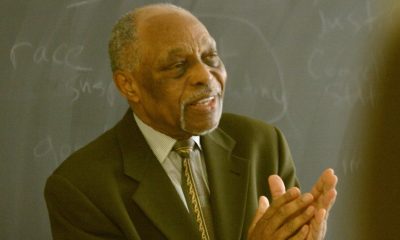

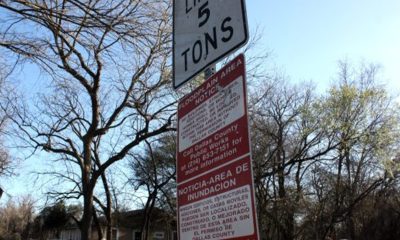

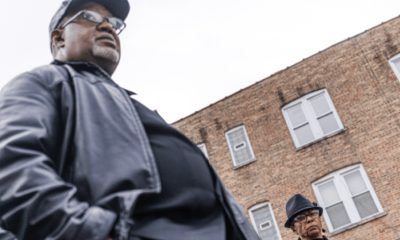

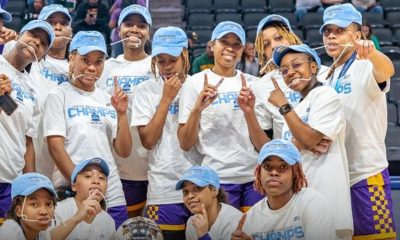









































1 Comment